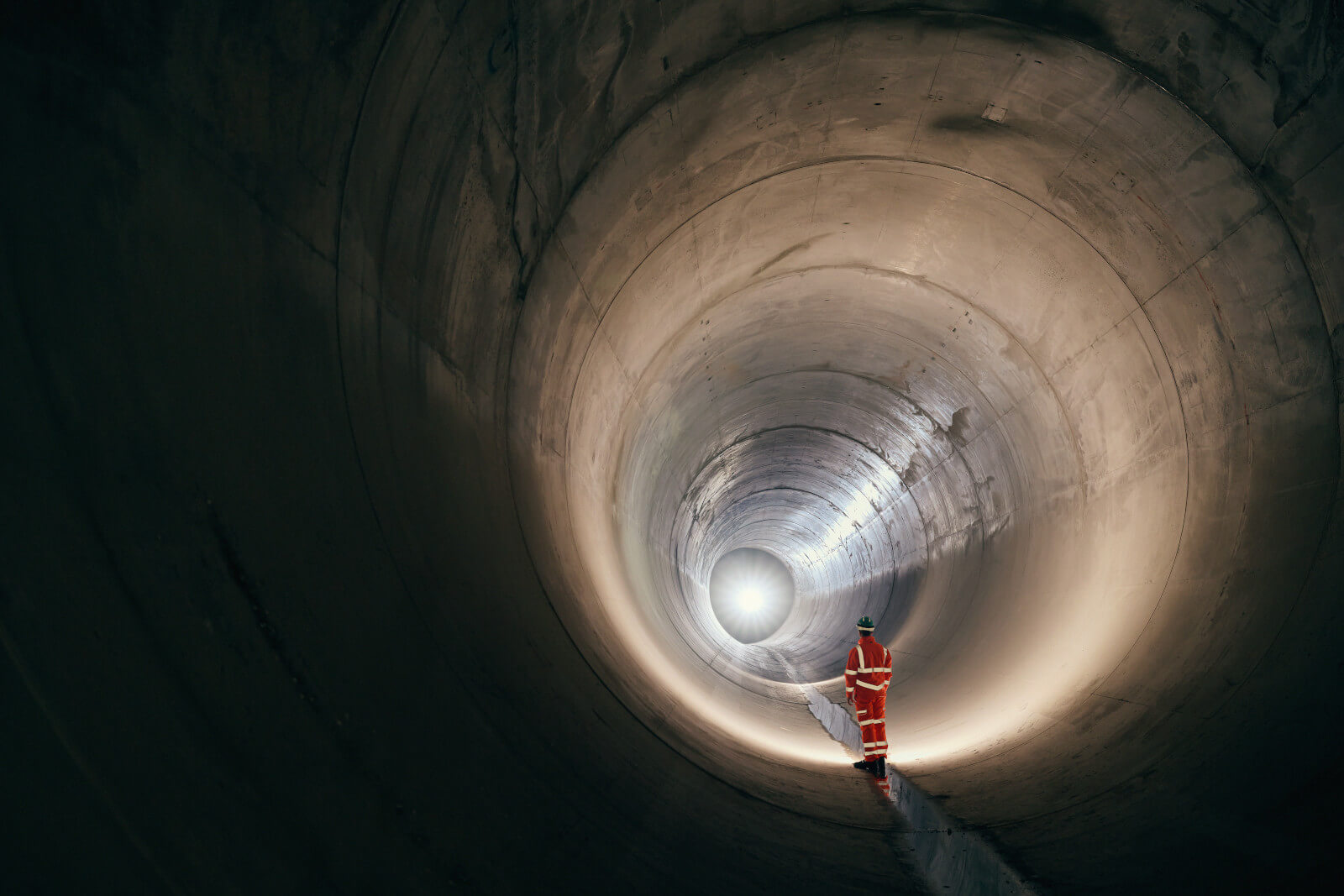Thames Tideway Tunnel

The River Thames is our most important water source. As the UK's largest water supplier, it's our responsibility to protect it. To achieve this, we're working on improving the sewage system.
One of the largest improvement projects to our network is the Thames Tideway Tunnel, or super sewer. Delivered by Tideway, this £4.5 billion project is a 25km tunnel running from west to east London. This is largely under the route of the River Thames.
The tunnel measures at 7.2m wide (the width of three London buses) and is up to 67m deep. This extra capacity will help the system cope with the growing population and environment.
It's part of a three-part London Tideway improvements scheme to improve river health.
Tideway have now started switching on the first of the sites. This means the new tunnel has started to protect the River Thames from sewage pollution. Work towards bringing the system into full operation is underway. This involves connecting the remaining discharge points to the new super sewer. The system will also be tested during different weather conditions, including heavy storms.
How the tunnel will help the river and environment
The Thames Tideway Tunnel will help to:
Reduce combined sewer overflows (CSOs) in a typical year by 95%.
Collect sewage so it can be treated before entering the river.
Provide habitats for a range of aquatic wildlife in the area.
Decrease over fifty sewage spills a year to around five. These will mostly contain surface water runoff after heavy storms.
Reduce the amount of sewage-related litter in the Thames. This will also decrease the amount ingested by wildlife.
Capture the ‘first flush’ from the sewers after heavy rain. This contains sediment built-up during periods of dry weather.
Protect our river's health and improve the appearance of the river.
Provide a clean, rich, and diverse ecology for London.
Generate more renewable energy using collected sewage waste.
Timeline of work
How this project has progressed.
Prior work
The plan for the London Tideway Improvements was created by the Thames Tideway Strategic Study. This was in the early 2000s.
First phase
We upgraded five Thames Water sites in 2014. This included Beckton, Crossness, Riverside, Long Reach and Mogden. These works, on average, have stopped over 40 million tonnes of sewage being discharged into the Thames every year. *
Second phase
In 2016, we built the Lee Tunnel. It intercepts the tidal Thames' largest combined sewer overflow (CSO) at Abbey Mills. The Lee Tunnel is a 7.2m diameter, 7km long tunnel. The tunnel runs from Abbey Mills pumping station to Beckton sewage treatment works.
The Lee Tunnel has captured over 5 million tonnes of sewage every year that would have previously discharged into the River Lee. **
Third phase
A new company dedicated to building the Thames Tideway Tunnel was set up. Bazalgette Tunnel Ltd, known as Tideway, started construction in 2016. In May 2024, the new 25km super sewer was connected to the Lee Tunnel. This completed the full ‘London Tideway Tunnel’ network.
We have spent 1.1bn to support Tideway in the delivery of the project.
The new tunnel operates with the sewage treatment works and the Lee Tunnel. Together this new combined system has a combined capacity of 1.6m m3 to protect the River Thames in London.
The Thames Tideway Tunnel has now begun intercepting CSOs along the river.
* Stats taken as an average from annual averages over 5 years (2016-2020 compared to 2009 to 2012)
** Stats taken as an average from annual averages over 5 years (2017-2021)
Funding the Thames Tideway Tunnel
Our wastewater customers are paying for the Thames Tideway Tunnel through their bills. Once completed, we will operate the tunnel as an integral part of the London sewerage network.
Average annual household bills will rise by no more than £25 a year as a result of the project, before inflation. An additional £2.5 billion has been invested by Thames Water for all three phases of this scheme.
Surveying the area
Since the Lee Tunnel has been completed, results found water quality in the area is improving.
The survey carried out on the Channelsea River also showed 14 species of fish. This indicates the river is healthy and supports a wide variety of fish and other wildlife. It can be considered a good quality urban river system.
Other investment projects
Take a look at our other investment projects to see what else we’re doing to improve our network and waterways.